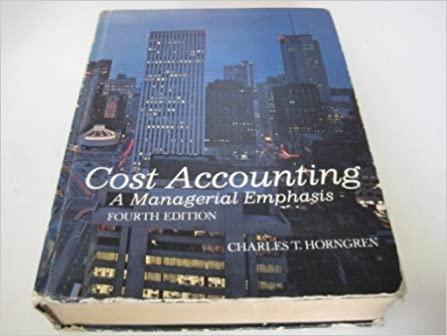


The Cocoa Edibles Factory manufactures and distributes chocolate products (Click the icon to view more information about Cocoa.) Production and sales data for August 2017 are as follows (assume no beginning inventory): (Click the icon to view the data.) Read the requirements Requirement 1. Calculate how the joint costs of $40,000 would be allocated between chocolate powder and milk chocolate under the different methods. a. Sales value at splitoff method. Begin by entering the appropriate amounts to allocate the joint costs. (R! More Info Sales value of total Joint costs production at splitoff Weighting allocated Chocolate powder Cocoa beans processed, 12,800 pounds Costs of processing cocoa beans to splitoff point (including purchase of beans), $40,000 Milk chocolate Sales Total Production 9,760 pounds 16,480 pounds Chocolate powder Milk chocolate 2,800 pounds 10,500 pounds b. Allocate the joint costs using the physical measure method. Begin by entering the appropriate amounts Selling Price 5 per pound 6 per pound $ $ Separable Processing Costs $ 13,700 $ 18,085 Joint costs Physical measure of total production Weighting allocated Cocoa Edibles Factory fully processes both of its intermediate products into chocolate powder or milk chocolate. There is an active market for these intermediate products. In August 2017, Cocoa Edibles Factory could have sold the chocolate-powder liquor base for $24 a gallon and the milk-chocolate liquor base for $32 a gallon. Chocolate powder Milk chocolate Print Done Total c. Allocate the joint costs using the net realizable value method. Begin by entering the appropriate amounts to allocate the joint costs. (Round the weighting amounts to four decimal places. Round the joint costs allocated to the nearest whole dollar.) Net realizable value Joint costs allocated Weighting c. Allocate the joint costs using the net realizable value method. Begin by entering the appropriate amounts to allocate the joint costs. (Round the weighting amounts to four decimal places. Round the joint costs allocated to the nearest whole dollar.) Net realizable Joint costs value Weighting allocated Chocolate powder Milk chocolate Total d. Constant gross-margin percentage NRV method. Begin by entering the appropriate amounts to allocate the joint costs. (Round the percentage to four decimal places, X.XXXX%.) The overall gross-margin percentage for all joint products together is D % Now determine the formula to compute the joint costs allocated, then enter the appropriate amounts. (Round your answers to the nearest whole dollar.) = Joint costs allocated Chocolate powder Milk chocolate Requirement 3. Could Cocoa Edibles Factory have increased its operating income by a change in its decision to fully process both of its intermediate products? Show your computations. (Use parentheses or a minus sign when entering decreasing amounts.) Begin by determining the formula to compute the increase/(decrease) in operating income, then enter the appropriate amounts. Increase/(decrease) = in operating income Chocolate powder Milk chocolate Cocoa Edibles Factory could increase operating income if chocolate powder liquor base is v and if milk-chocolate liquor base is The Cocoa Edibles Factory manufactures and distributes chocolate products (Click the icon to view more information about Cocoa.) Production and sales data for August 2017 are as follows (assume no beginning inventory): (Click the icon to view the data.) Read the requirements Requirement 1. Calculate how the joint costs of $40,000 would be allocated between chocolate powder and milk chocolate under the different methods. a. Sales value at splitoff method. Begin by entering the appropriate amounts to allocate the joint costs. (R! More Info Sales value of total Joint costs production at splitoff Weighting allocated Chocolate powder Cocoa beans processed, 12,800 pounds Costs of processing cocoa beans to splitoff point (including purchase of beans), $40,000 Milk chocolate Sales Total Production 9,760 pounds 16,480 pounds Chocolate powder Milk chocolate 2,800 pounds 10,500 pounds b. Allocate the joint costs using the physical measure method. Begin by entering the appropriate amounts Selling Price 5 per pound 6 per pound $ $ Separable Processing Costs $ 13,700 $ 18,085 Joint costs Physical measure of total production Weighting allocated Cocoa Edibles Factory fully processes both of its intermediate products into chocolate powder or milk chocolate. There is an active market for these intermediate products. In August 2017, Cocoa Edibles Factory could have sold the chocolate-powder liquor base for $24 a gallon and the milk-chocolate liquor base for $32 a gallon. Chocolate powder Milk chocolate Print Done Total c. Allocate the joint costs using the net realizable value method. Begin by entering the appropriate amounts to allocate the joint costs. (Round the weighting amounts to four decimal places. Round the joint costs allocated to the nearest whole dollar.) Net realizable value Joint costs allocated Weighting c. Allocate the joint costs using the net realizable value method. Begin by entering the appropriate amounts to allocate the joint costs. (Round the weighting amounts to four decimal places. Round the joint costs allocated to the nearest whole dollar.) Net realizable Joint costs value Weighting allocated Chocolate powder Milk chocolate Total d. Constant gross-margin percentage NRV method. Begin by entering the appropriate amounts to allocate the joint costs. (Round the percentage to four decimal places, X.XXXX%.) The overall gross-margin percentage for all joint products together is D % Now determine the formula to compute the joint costs allocated, then enter the appropriate amounts. (Round your answers to the nearest whole dollar.) = Joint costs allocated Chocolate powder Milk chocolate Requirement 3. Could Cocoa Edibles Factory have increased its operating income by a change in its decision to fully process both of its intermediate products? Show your computations. (Use parentheses or a minus sign when entering decreasing amounts.) Begin by determining the formula to compute the increase/(decrease) in operating income, then enter the appropriate amounts. Increase/(decrease) = in operating income Chocolate powder Milk chocolate Cocoa Edibles Factory could increase operating income if chocolate powder liquor base is v and if milk-chocolate liquor base is









